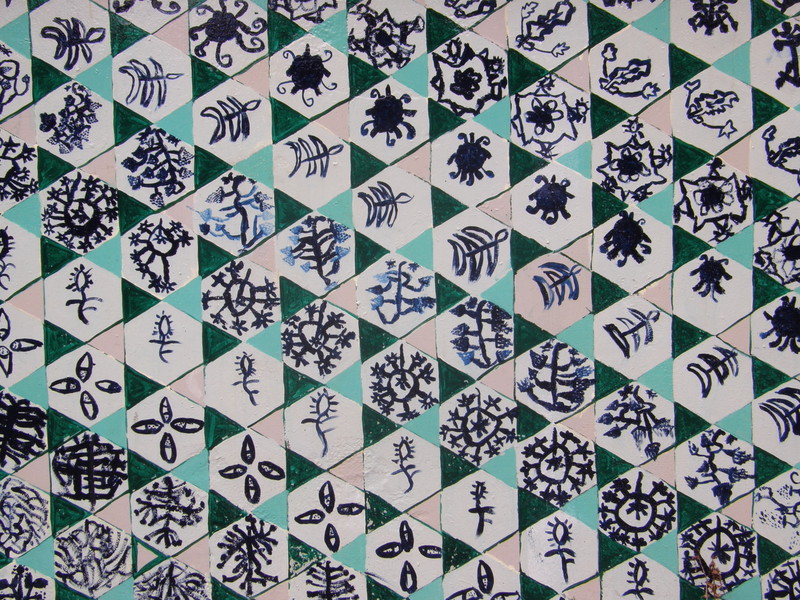
Wow, the relief is palpable. Last night I was on tenterhooks, poring over the free papers and checking the news on the red button, because yet again Bob Crow and his pals at the RMT were threatening a strike, probably over the number of biscuits they get on their tea break, the colour of the socks that station janitors have to wear, or one of the other rent-a-reason justifications they keep coming up with. This was going to be a 72-hour strike, staring at midday today and lasting into the weekend, which would have completely screwed up my plans to start the Jubilee line tomorrow. Apparently only 25 per cent of the union actually voted for a strike, just to rub salt into the wound.
Thankfully the strike was called off late last night, and services ran as normal today. But I'd just like to say that, for all the stress the union has caused me in the last couple of days, worrying about whether I was going to have to delay my finishing date due to their industrial action, I've joined the Facebook group 'Bob Crow (and the RMT) are wankers'. Apparently there are 1930 other members, and that number is growing all the time; there's also a group called 'Bob Crow (and the RMT) are NOT wankers', but it's trailing slightly at just 16 members. Looks like Bob will be the first against the wall when the revolution comes, which has a certain satisfying irony to it, I think...
King's Cross St Pancras to Highbury & Islington
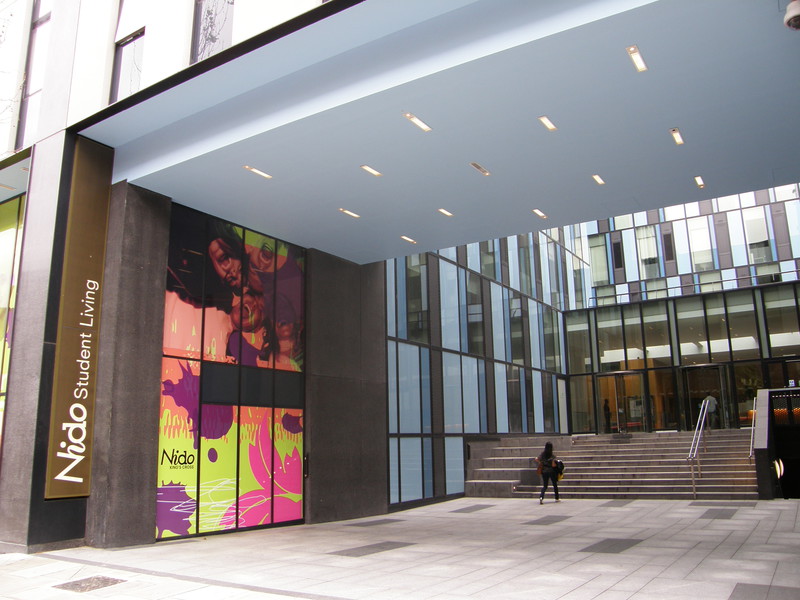
I feel as if I've walked this section already, it's so close to my Piccadilly line walk from King's Cross to Finsbury Park, so forgive me if this sounds familiar. It's a bit of an urban walk along Pentonville Road past King's Cross Thameslink, with buses thundering past and construction work overhead, but there are a couple of things to note. Veolia, the people who empty your bins in the morning, have their headquarters in a converted church along here, which makes them one of the more attractive buildings in the vicinity, and there's a modern block for students called Nido that looks a lot more impressive than you'd expect from student accommodation.
It gets quieter up Penton Street, and on the right after a short while is Chapel Street, which has a street market if you fancy a quick shop on the way north. I didn't particularly, so instead I strode onwards, past some huge Edwardian blocks of apartments and the Young Actors Theatre, passing Barnard Park on the way. I popped my head into the park, but it isn't that exciting, with most of the park taken up with all-weather football pitches. It's much more pleasant back on the street, where Victorian terraces disappear into the distance (which is clearly the theme for this part of town).

Off to the east is Lonsdale Square, where suddenly things take off; the southern Victoria line was all about beautiful squares tucked away between social housing and Victorian terraces, and it seems the northern section is the same. The brick townhouses around Lonsdale Square are absolutely exquisite, dating from between 1838 and 1842, and apparently they were designed by an architect who mainly designed almshouses, which explains the slightly gothic atmosphere of the square. You can smell the money, and for the first time since leaving the station, it feels more like Islington than King's Cross.
The Victorian and Edwardian housing takes over again once you're out of the square, passing schools with separate entrances for Boys and Girls (which presumably aren't enforced any more) and a couple of modern estates that blend in reasonably well. Highbury & Islington station is pretty disappointing considering the amount of money in this part of London, though there's a good excuse as the original station on this site, which served the North London Railway from 1872, was destroyed by a V1 flying bomb in the Second World War, and the current station was built in the 1960s to serve the existing lines and the new Victoria line, and the 1960s was not a great decade for train station design. On the other side of Holloway Road is an old station frontage from 1904 for the Northern City Line, which links Moorgate and Finsbury Park; this used to be part of London Underground, though it's now part of the national rail network and is served by the 1960s station building, and the old station is now defunct.
Highbury & Islington to Finsbury Park
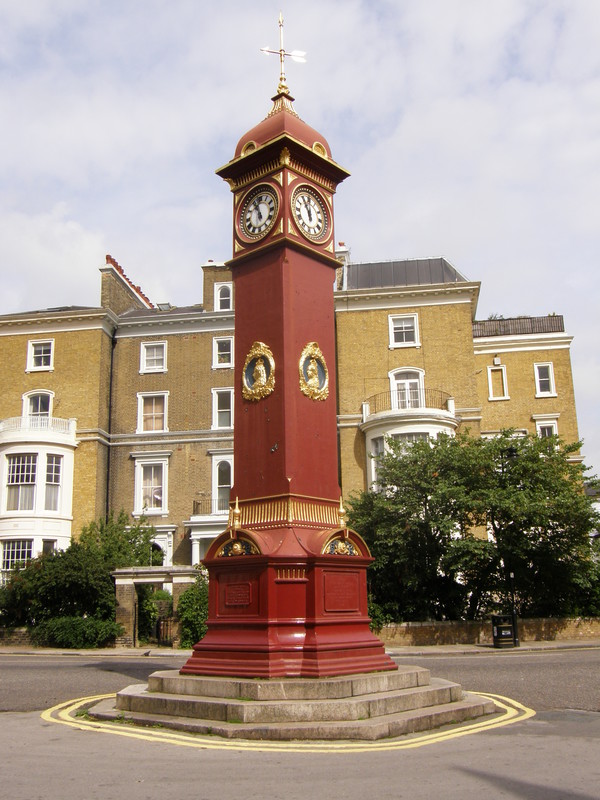
Just north of Highbury & Islington station is the greenery of Highbury Fields, the largest open space in the Borough of Islington. The park is a fairly uninteresting open piece of grassland, but the Georgian and Victorian terraces lining the Fields are superb, and not surprisingly they are highly desirable residences. Highbury Place, the straight road that flanks the eastern side of the Fields, was completed in 1777, while Highbury Crescent, on the western side of the Fields, dates from 1844. At the northern end of the Fields is the tall spire of Christ Church, but even more impressive is Highbury Clock, a large red Victorian clock tower that stands proudly in the middle of the junction of Highbury Hill and Highbury Barn, just by the church. It was unveiled in 1897 to celebrate the 60th anniversary of Queen Victoria coming to the throne, and the old queen herself is picked out in golden profile on the sides of the clock.
The streets to the north of the Fields are also lined with lovely townhouses, though Leigh Road turns into the more modern estate, with a collection of dark brick houses that's a bit of a contrast with the opulence to the south. It heralds a new, more working-class aesthetic, because along Avenell Road is the old home of Arsenal Football Club, Highbury Stadium. Arsenal are now happily ensconced in the nearby Emirates Stadium, which I visited on my Piccadilly line walk from King's Cross to Bounds Green, and the old stadium is currently being converted into an exclusive apartment complex called Highbury Square. The Art Deco East and West Stands are being preserved and incorporated into the new development, and from the outside the project looks very interesting (though the new apartments on either side of the stadium look terribly bland from the road, so I hope this doesn't happen on the inside, as the stadium is an atmospheric old place).
Finsbury Park station is just up the road from the stadium, along pleasant roads of Victorian terraces, and there I met my friend David, whom I last met when I reached Leytonstone on the Central line, and who works just round the corner from Finsbury Park. And so, 15 minutes later and fortified with coffee and conversation, I set off east in the direction of Seven Sisters...
Finsbury Park to Seven Sisters
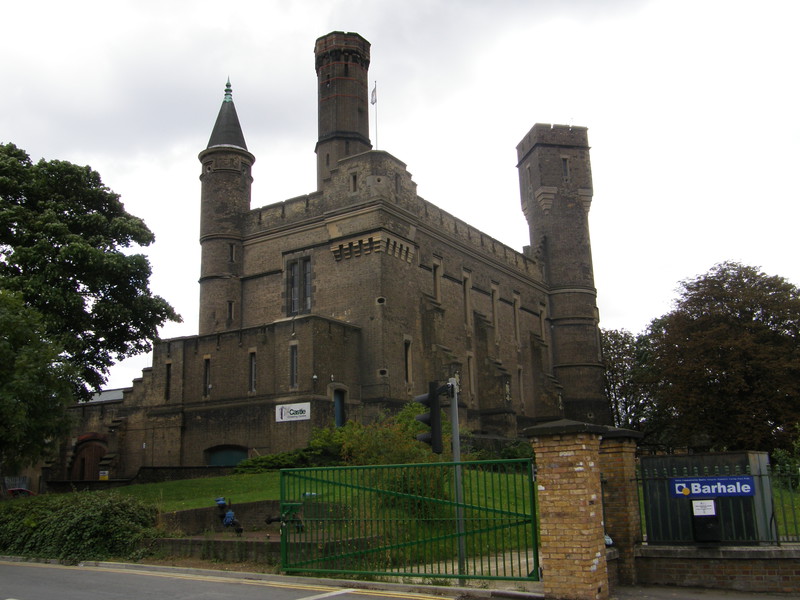
It's more Victorian terraces mixed with more modern housing blocks, all the way to Green Lanes (which forms the eastern side of the Harringay Ladder, further north). Just a little to the south is a strange castle-shaped building that turns out to be an old Victorian pumping station; these days it's a climbing centre called – wait for it – the Castle Climbing Centre, and at its feet runs the Capital Ring on day 12 from Highgate to Stoke Newington, which I thought I'd join for the next section.
From here the Ring follows the New River, which was built in 1613 to bring fresh water to London from Ware in Hertfordshire, 40 miles away. The river was built to follow the contours all the way, dropping an average of two inches every mile, so the water flows without the need for pumps. At this point the river meanders around in an elongated 'S' shape, passing along the northern shores of two reservoirs, the imaginatively named West and East Reservoirs, and it makes for enjoyable walking.
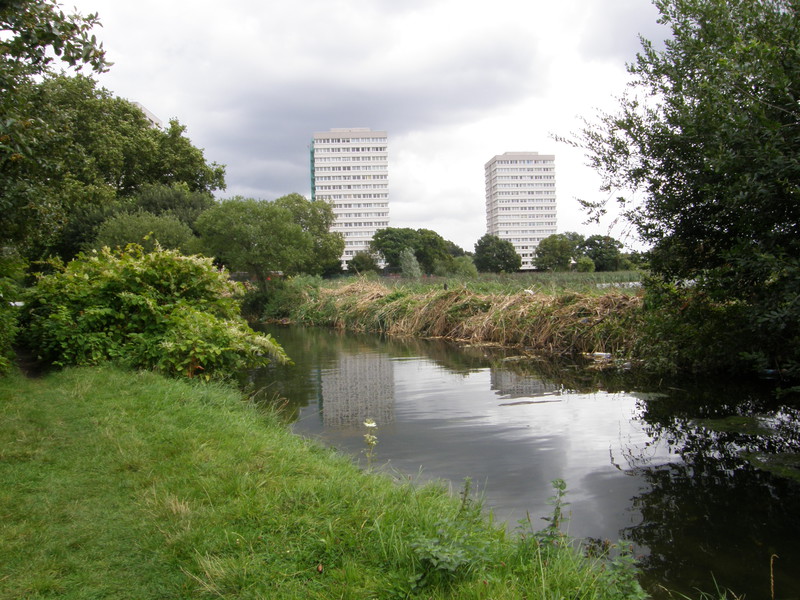
The West Reservoir is home to a sailing club, and the boats were out in force today, making an interesting sight with the spire of St Mary's Church in Stoke Newington in the background. Indeed, the only negative aspect of the New River is the amount of rubbish, not in the river but on the banks. The biggest culprits are beer cans, which lie in large piles along the banks, their Stella and Tyskie logos fading in the sunlight. It's not pleasant, though at least there weren't any drunks... today, at least.
The Ring soon disappears to the west to head for Finsbury Park, and then it's a very long and utterly tedious slog along the busy Seven Sisters Road to Seven Sisters station. There's a fairly bland entrance to the station on Seven Sisters Road and some subways out on the High Road, but there's not a lot else to see, as all the station buildings are underground (the original national rail station here was closed by British Rail in 1968 and all the surface buildings were removed). Oh, and for all you trivia fans, the section between Seven Sisters and Finsbury Park is the longest unbroken section of deep-level tube line on the whole Underground... so now you know why it takes so long.
Seven Sisters to Tottenham Hale
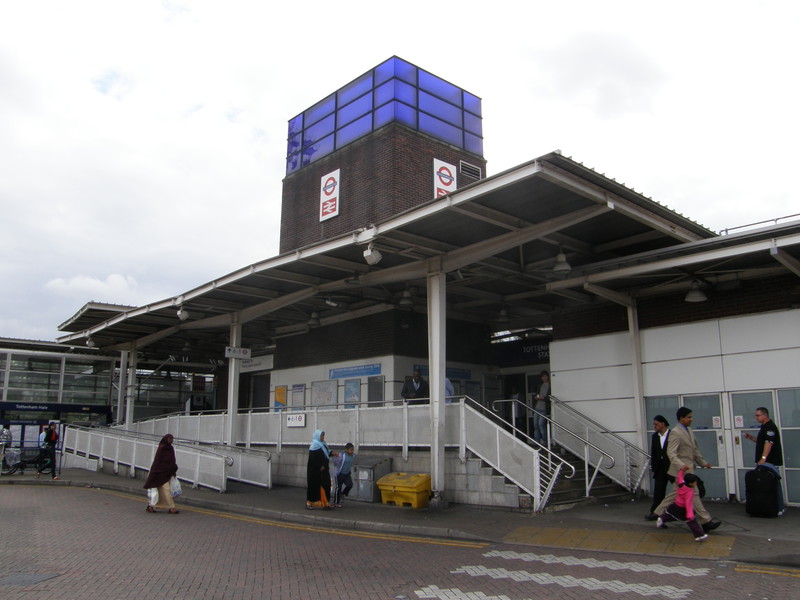
Seven Sisters is not the loveliest part of the world, and there's a faded feeling to the walk between Seven Sisters and Tottenham Hale, though the backstreets are considerably more pleasant than being out on Seven Sisters Road. There are some lovely snippets of Victorian housing along the way, and some modern developments that manage to blend in pretty well, but this is pretty standard suburbia, and it probably makes for better living than walking.
Coming out onto Broad Lane, you can't help but be impressed by the size of Tottenham Hale Retail Park, even if it's not terribly attractive. It's all Currys, Argos, B&Q, Halfords and Office World, finished off with the usual range of big-brand junk food outlets, and it's a world best left to people in cars, rather than on foot.
Tottenham Hale station – which was known as plain old Tottenham until the Victoria line came this way in 1968 – is a strange sight. It's a mainly steel building with a slightly undulating roof, and on top of the roof is a dark brick rectangular tower, topped with what looks like a stack of blue glass bricks. It works surprisingly well, and I rather hope it lights up at night, because if it does, it's almost a modern echo of Charles Holden's design for Boston Manor on the Piccadilly line (though Holden's effort is somewhat more stylish, needless to say).
Tottenham Hale to Blackhorse Road
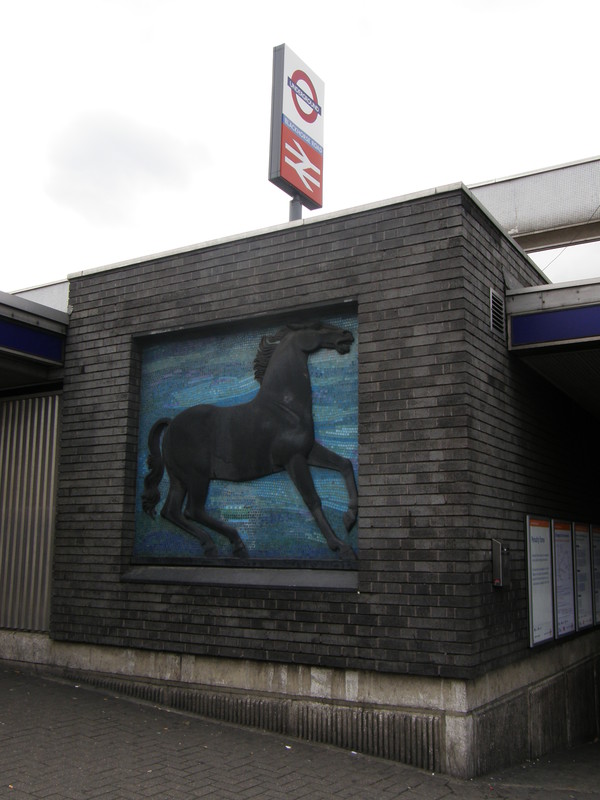
The main road east from Tottenham Hale to Blackhorse Road passes between two huge banks of reservoirs, and looking at the map I assumed it would be a rather enjoyable walk... but I was wrong. The A530 is fiercely busy, the reservoirs to the north are cordoned off behind some serious Thames Water security fences, and you can't even see the reservoirs to the south, as there's a big brick wall all along the side of the road, with a railway line just beyond it. There are some pretty views as you cross the Pymmes Brook (which I first met in Arnos Grove), there's an intriguing brick tower on the north side of the road that turns out to be a ventilation shaft for the Victoria line below, and there's a pleasant-looking pub by the side of the road, but it's a long slog along the side of the traffic to get to the edges of Walthamstow.
Blackhorse Road station is a pretty uninspiring and squat 1960s station building, and its only redeeming feature is the mosaic of a black horse by the entrance. However, even this is contentious, as the name Blackhorse Road comes from a corruption of 'black house', rather than 'black horse', though perhaps the dingy aspect of the Tube station is supposed to reflect the true etymology.
Blackhorse Road to Walthamstow Central
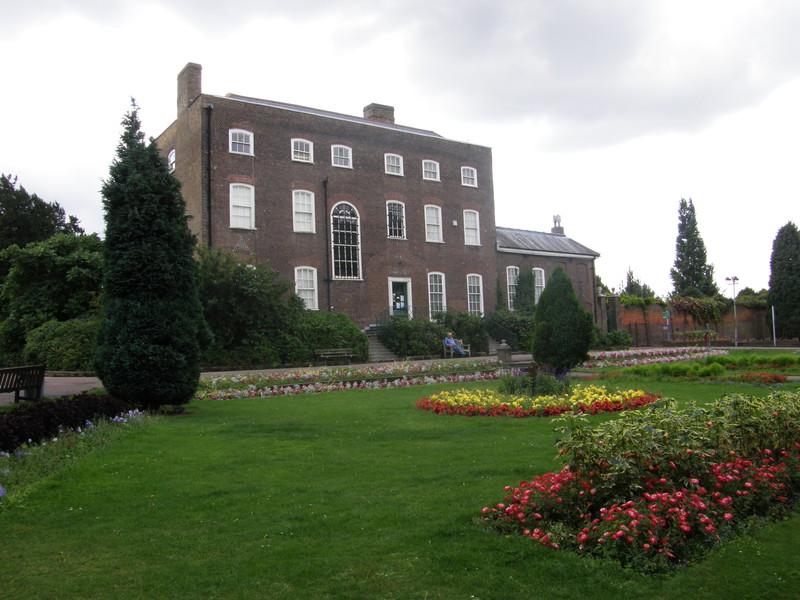
My initial route from Blackhorse Road to Walthamstow Central had me meandering through the backstreets to Walthamstow Village, and then doubling back towards the Tube station, but I received two excellent suggestions in two days, and I thought I'd act on both of them. David suggested I visit the William Morris Gallery on Forest Road, and my brother said I just had to check out the Town Hall, so I added half a mile to my route, and I'm so glad I did.
I still had to walk through the backstreets of west Walthamstow to get there, and I was pleasantly surprised by what I saw. I don't know what I was expecting, but the housing in Walthamstow is a lot more attractive than I'd have guessed. Most of the houses are Edwardian or from the 1920s and 1930s, and the rows of terraces are enjoyable to walk along, though there is perhaps not as much variety as I'd hoped for. It's certainly more pleasant than the main Forest Road, where the traffic is continuous and dominated by huge, thundering trucks.
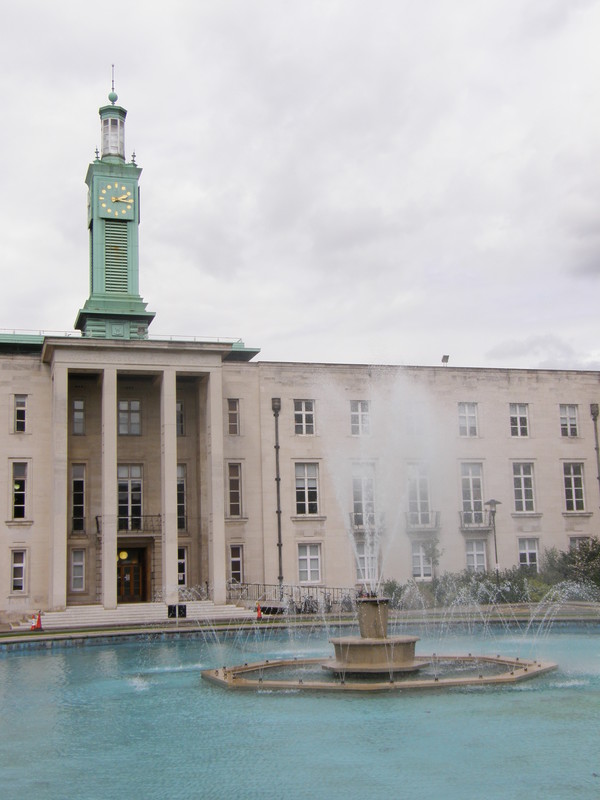
Just off the main road, the William Morris Gallery is well worth a visit, if only for the pleasant park behind the house where Morris lived from 1848 to 1856. The house itself is a Georgian building from the middle of the 18th century, and in the back garden is an aviary, a small stream and a good view of the house. I didn't have the energy to visit the museum – having worked at the V&A, I've seen enough William Morris designs to last me a lifetime – but it makes a good spot for a rest, ready for the final push.
The main road continues in its busy, shop-lined fashion to the corner with Farnan Avenue, when boom! The vista suddenly opens up to the left, and there is one of the most impressive buildings I've seen in the whole of outer London. This is the magnificent Waltham Forest Town Hall, and it's the centrepiece of the Civic Centre, which consists of the Technical College (built in 1938), the Town Hall (1941), the Assembly Hall (1943), and the relatively disappointing modern Court House (1971). The Town Hall, though, is exactly as my brother described it. 'It's just like a building from Stalinist Russia, plonked there in the middle of Walthamstow,' he said, and he's absolutely right; it's a monster of a building, built of white stone in a modernist style, crowned by a huge green spire sporting a gold-numbered clock halfway up. In front of the hall is a round pool with a fountain spouting away in the middle, and the well-manicured gardens slope down to this huge edifice, giving a real sense of space that you don't see in London very often. I absolutely loved it, and it made the walk to the end of the Victoria line well worth the effort.

After the incredible beauty of the Town Hall, Walthamstow Village was always going to a bit of a let-down, though it's still worth a visit. Centred round St Mary's Church, which was founded in the 12th century, there are two sets of almshouses, one from the 16th century and the other from the 18th century; the timber-framed Ancient House, which dates from the 15th century; the Vestry House, which is now a museum; and a handful of other buildings, such as the old fire station and a spiritualist church. The churchyard is full of old graves, and it's a pleasant place to explore, with at least one good pub to refresh you after a long walk.
Walthamstow Central station is a short walk from the village, and although it sports a flashy new bus terminal and a huge glass and steel sign on the road proclaiming that this is indeed Walthamstow Central, there isn't a station building as such, just stairs down into the hot depths of the Victoria line. And that's the end of the line; it's short, the Victoria line, but it's an interesting walk, even if it doesn't quite shine as one of the all-time greats. Still, if I remember anything about this line, it will be Waltham Forest Town Hall, which made the whole journey worthwhile, all by itself.